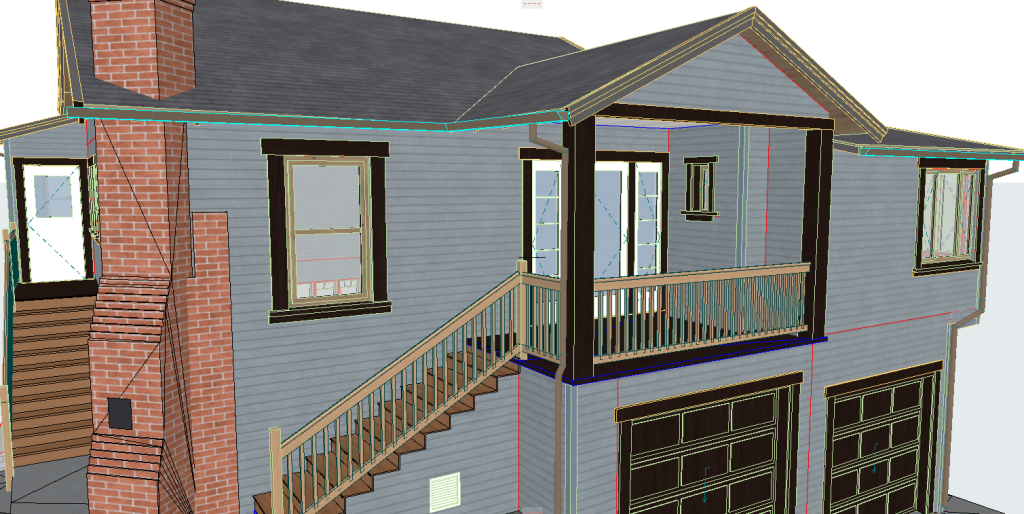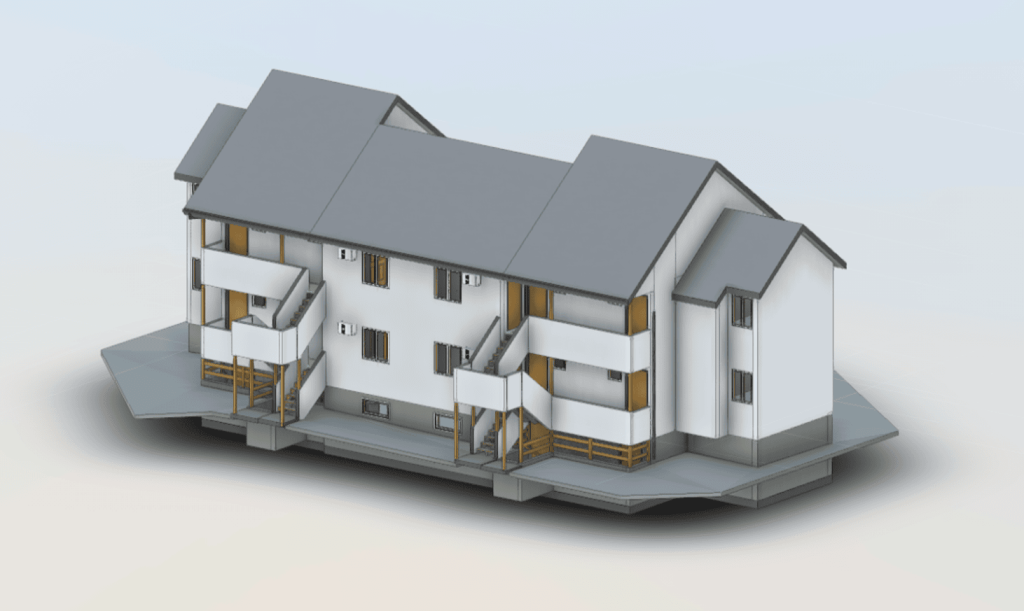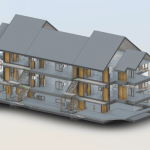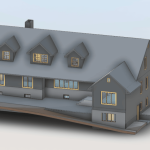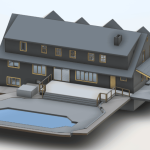Restoring Buildings After Natural Disasters Using 3D Laser Scanning

Natural disasters like earthquakes, floods, and hurricanes can lead to extensive damage to buildings and infrastructure. In the aftermath of such events, restoring damaged structures is a complex and urgent task. Traditional assessment and restoration methods can be time-consuming and less accurate, which is why modern technologies like 3D laser scanning are becoming essential tools for disaster recovery. At ScanM2, we specialize in laser 3D scanning, modeling, and creating precise as-built documentation to help clients quickly and effectively restore buildings after natural disasters.
How 3D Laser Scanning Assists in Building Restoration
3D laser scanning is a non-intrusive technology that collects precise and comprehensive data on a building’s existing condition. It works by using laser beams to measure distances and generate a comprehensive 3D model of the structure, including hard-to-reach areas. The scanning process rapidly gathers millions of data points, forming a detailed “point cloud” that accurately depicts the building’s geometry.

This technology is ideal for post-disaster restoration because it provides a highly accurate representation of the building’s current state, which can be used to assess structural damage, plan repairs, and even monitor the progress of reconstruction work. Here’s how ScanM2’s laser scanning services can help in the restoration process:
- Damage Analysis: We perform a comprehensive scan of the damaged building to identify structural issues, deformations, and other hazards. This data enables engineers and architects to precisely evaluate the damage and strategize the required repairs.
- Building Inspection: With detailed scans, we can conduct thorough inspections of buildings that have been impacted by natural disasters, such as earthquakes or floods. This inspection data can be used to make informed decisions about the building’s structural integrity and the steps required for safe restoration.
- Documentation for Insurance Claims: Accurate documentation is critical when filing insurance claims for disaster recovery. Our 3D scanning services provide detailed visual records and precise measurements that can serve as evidence of the damage, facilitating smoother and faster claims processing.
- Planning Reconstruction: The data captured through 3D laser scanning can be used to create as-built drawings, BIM (Building Information Modeling) models, and 3D models that help restoration professionals plan reconstruction with a high level of precision.
Our As-Built Drawings and models
Formats and Programs for Deliverables
At ScanM2, we provide clients with comprehensive documentation in various formats suitable for different stages of the restoration process. The formats include:
- Point Clouds: Delivered in popular formats such as .e57, .las, and .pts for easy integration into various CAD and BIM software.
- 2D Drawings: As-built drawings can be provided in formats like .dwg or .dxf, which are compatible with most CAD programs.
- BIM Models: We create detailed BIM models using software such as Revit, allowing for efficient planning, visualization, and management of the restoration project.
- 3D Models: Clients can receive 3D models in formats like .obj or .fbx, which can be used for simulations, virtual inspections, and further analysis.
Our team can also work with specialized software such as AutoCAD, Revit, Navisworks, and Rhino, ensuring seamless collaboration and compatibility with the client’s preferred tools.
Why 3D Laser Scanning is Cost-Effective and Beneficial
Compared to traditional inspection and restoration methods, laser 3D scanning offers significant advantages that can save both time and money:
- Speed: The scanning process is much faster than manual measurements, allowing restoration to begin sooner and minimizing downtime.
- Accuracy: The high level of precision provided by laser scanning ensures that no detail is overlooked, which reduces the likelihood of errors during reconstruction.
- Safety: Because laser scanning is non-contact, it allows for the safe inspection of dangerous or unstable areas without putting personnel at risk.
- Comprehensive Data: 3D scanning captures data from all angles, including hard-to-reach areas that would be difficult to measure manually.
- Cost-Effectiveness: Even with its sophisticated technology, 3D laser scanning remains a budget-friendly solution. It reduces the need for multiple site visits, minimizes manual labor, and helps avoid costly mistakes by providing accurate and reliable data.
Advantages Over Traditional Methods
Conventional inspection techniques typically depend on manual measurements and visual checks, making them time-consuming and susceptible to human error. In contrast, 3D laser scanning delivers a more comprehensive assessment with the following benefits:
- Reduced Project Time: By quickly capturing detailed data, laser scanning significantly shortens the assessment phase, allowing restoration teams to start work sooner.
- Enhanced Collaboration: The digital nature of 3D scanning data makes it easy to share information with all stakeholders, including architects, engineers, and insurance adjusters, ensuring that everyone has access to the most up-to-date information.
- Improved Project Management: 3D models and BIM data can be used to monitor the progress of restoration work, ensuring that the project stays on track and within budget.
- Minimized Material Waste: Accurate data helps in precise planning, which can reduce material waste and unnecessary expenses during reconstruction.

Partner with ScanM2 for Effective Disaster Restoration
At ScanM2, we understand the urgency and complexity involved in restoring buildings after natural disasters. Our expertise in laser 3D scanning, combined with our commitment to quality, makes us the ideal partner for clients looking to restore structures quickly and efficiently. By using cutting-edge technology and delivering accurate documentation in various formats, we help our clients navigate the restoration process with confidence.
Contact us today to learn how our 3D laser scanning services can support your disaster restoration project and help you restore buildings safely, accurately, and cost-effectively.
FAQ
What is 3D laser scanning, and how does it work?
3D laser scanning utilizes laser beams to obtain precise measurements of a building’s structural details. It generates a “point cloud,” a set of data points that depict the building’s geometric shape. The data can subsequently be utilized to create precise 3D models and as-built drawings.
How can 3D laser scanning help in the restoration of a building after a natural disaster?
After a disaster, 3D laser scanning helps assess the extent of the damage, provides precise documentation for insurance claims, and creates accurate models for planning repairs and reconstruction. It guarantees that every detail is recorded, streamlining the restoration process and enhancing its reliability.
Is 3D laser scanning expensive?
Despite its advanced capabilities, 3D laser scanning is a cost-effective solution. It can save money in the long run by reducing the need for multiple site visits, minimizing errors in reconstruction, and providing accurate data that helps streamline the restoration process.
In what formats can I receive the scanned data and documentation?
At ScanM2, we provide deliverables in a range of formats, including point clouds (.e57, .las, .pts), 2D drawings (.dwg, .dxf), BIM models (compatible with Revit), and 3D models (.obj, .fbx). We can seamlessly incorporate the data into software such as AutoCAD, Revit, and Navisworks.
How accurate is 3D laser scanning compared to traditional methods?
3D laser scanning delivers a significantly greater level of accuracy compared to traditional techniques. It captures data with millimeter precision, ensuring no details are missed, which is critical when restoring a building’s structural integrity.
How long does the scanning process take?
The scanning process is typically quick, with most projects taking anywhere from a few hours to a couple of days, depending on the size and complexity of the structure. This speed allows restoration efforts to begin sooner.
Can 3D laser scanning be used for all types of buildings?
Yes, 3D laser scanning can be used for a wide range of buildings, including residential houses, commercial properties, industrial facilities, and historical structures. It is especially useful for complex or hard-to-reach areas.




